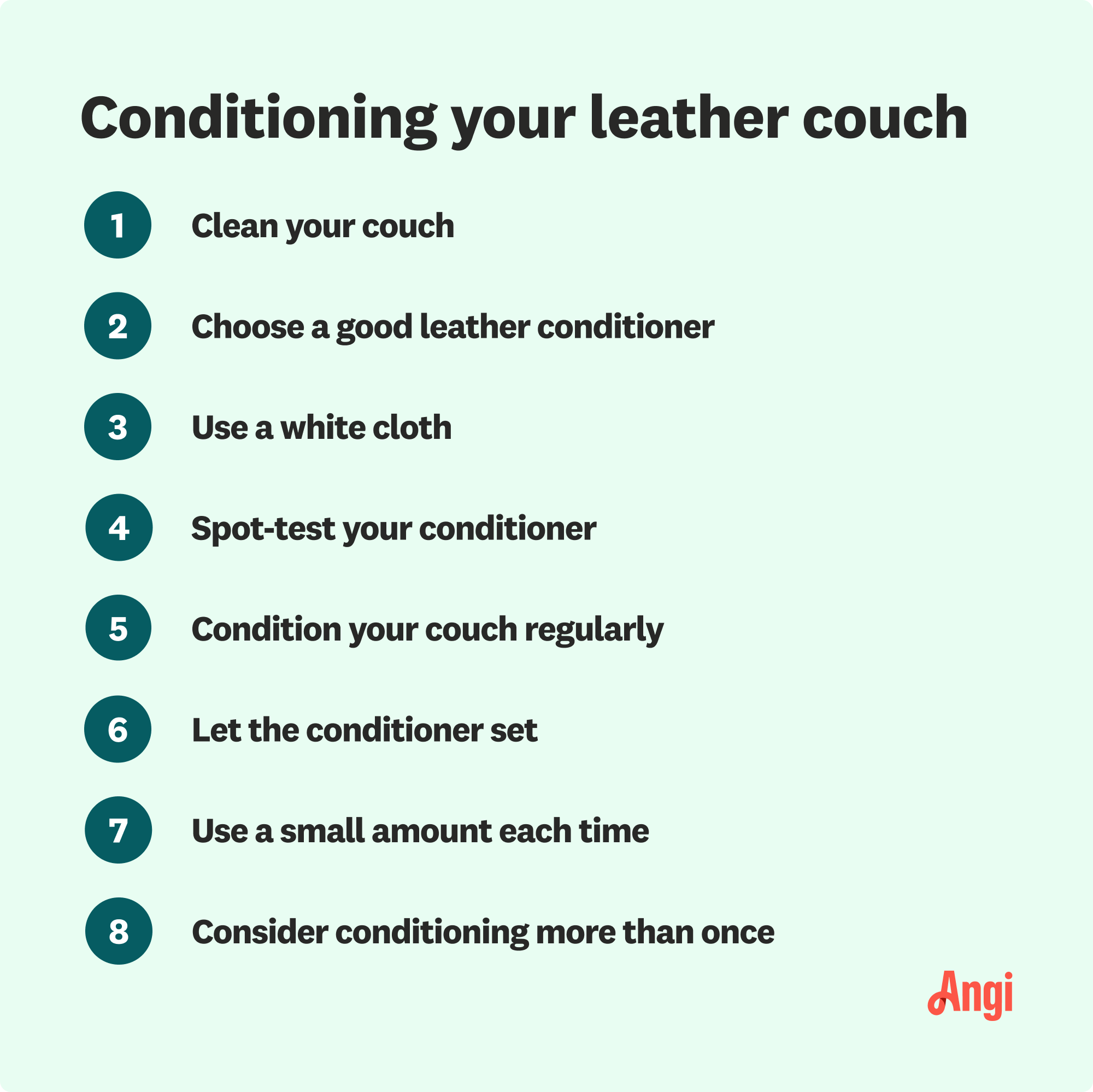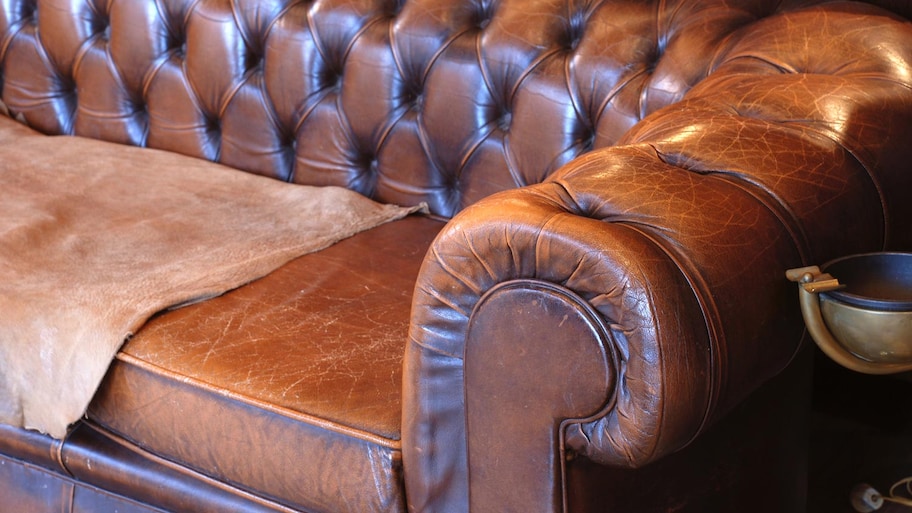Give your leather couch some love
Your leather couch is an investment, so it’s important to give it the proper care it needs. When it comes to maintaining leather furniture, conditioning is a must. Leather dries out over time, so applying conditioner effectively can help it remain soft, bring out its best features, and extend its life.

1. Clean Your Couch
Prepare your leather couch for conditioning by cleaning it. Cleaning your leather couch is an important step because it helps the leather absorb the conditioner properly. Vacuum the crevices of your couch where particles collect and wipe down the surface using a soft, damp cloth.
If your couch needs a deeper clean, use a cleaner or soap designated for leather upholstery. Once you’ve cleaned your couch, let the leather dry completely before conditioning.
You may even want to consider having a local furniture cleaner take care of your couch once a year. This helps remove permanent stains and primes your couch for conditioning.
2. Choose a Good Leather Conditioner
It’s important to select a conditioner to help the leather on your couch stay supple. Leather is prone to forming cracks because it loses moisture over time. When looking for a leather conditioner, you can choose from creams, oils, and waxes. The conditioner you use may also depend on the type of leather on your couch. Make sure to look for a conditioner that contains sunscreen to protect it from UV damage.
3. Use a White Cloth
To avoid staining your leather couch, use a lint-free white cloth when applying conditioner. Using a colored can run the risk of having the dye run on your leather upholstery. A microfiber cloth is ideal, but any soft cloth will work when conditioning your couch.
4. Spot-Test Your Conditioner

Always spot-test new leather conditioners where it’s least visible. This can be around the back corner of the couch, where guests are least likely to see it. Test it out on a small spot with a clean cloth, then leave it to dry for at least 24 hours.
5. Condition Your Couch Regularly
Make sure to condition your couch every 6 to 12 months to keep it looking supple and new. The climate you live in affects how often leather upholstery needs conditioning, so your couch may need more care if you live in a dry place.
Leather conditioner prevents your couch from cracking while keeping it safe from other oils and dirt. By consistently applying conditioner, you protect the leather upholstery of your furniture so you can enjoy it for years to come.
6. Let the Conditioner Sit
Conditioner typically needs to sit for at least two hours after application. Different brands of conditioner may have specific instructions, so check the label for the amount of time recommended for the product to sink in. Once that time has passed, remove the excess to avoid getting it on your clothes when you sit on your couch.
7. Use a Small Amount Each Time
Apply a thin layer of conditioner to your couch. Using too much at once can saturate the leather and block its pores. As a result, your couch gets sticky from the excess oil. In extreme cases, over-conditioning can saturate the inner layer of leather and rot the leather’s fibers. When it comes to using conditioner, less is more.
8. Consider Conditioning More Than Once
If the leather on your couch is particularly dry or cracked, it may need multiple treatments. Pay attention to see how quickly your couch absorbs conditioner, and make sure it’s completely dry before applying again. The key is to be patient and wait for the leather to absorb the conditioner naturally. Once it’s fully absorbed, apply another thin, even layer.




